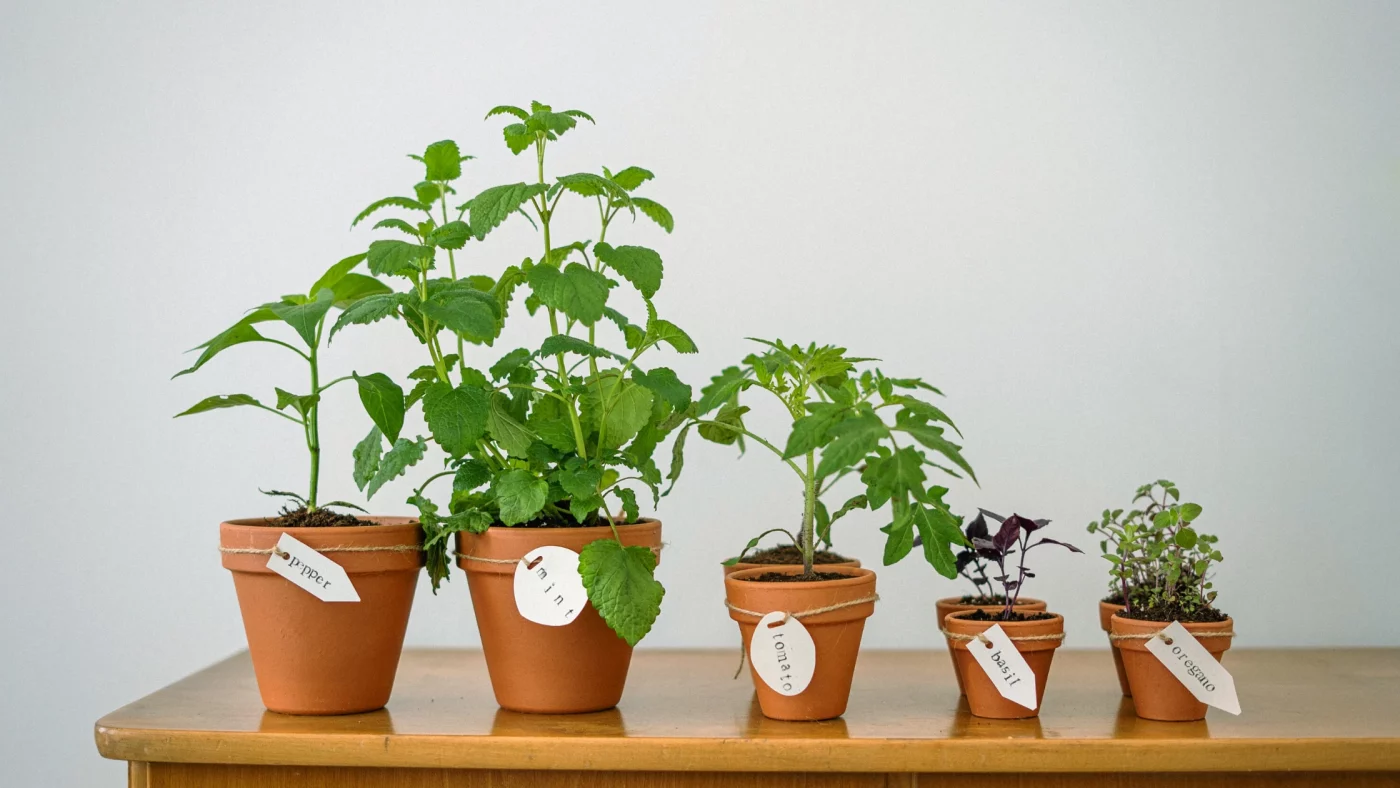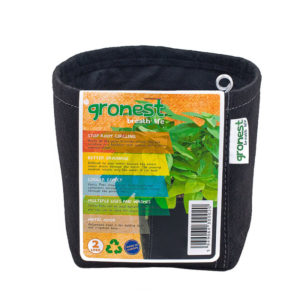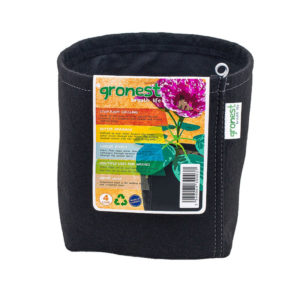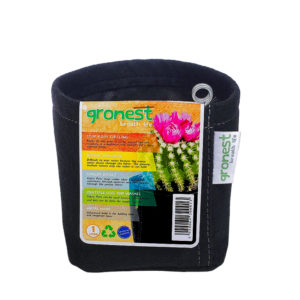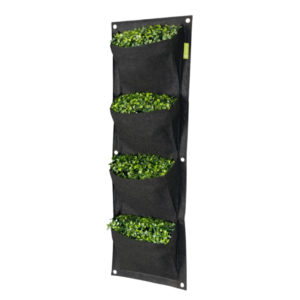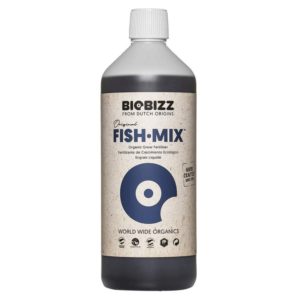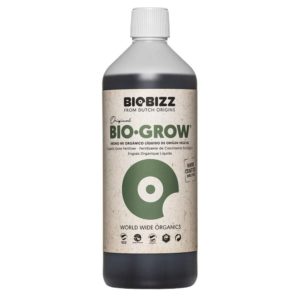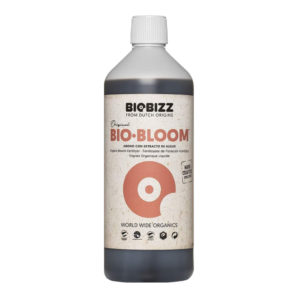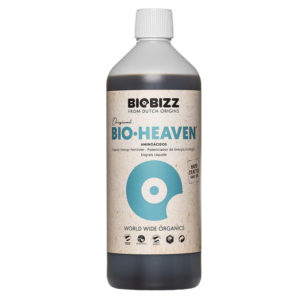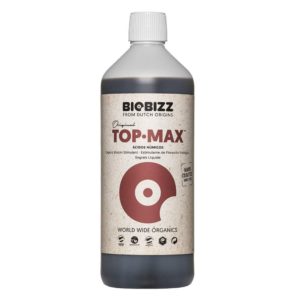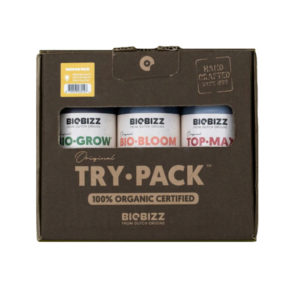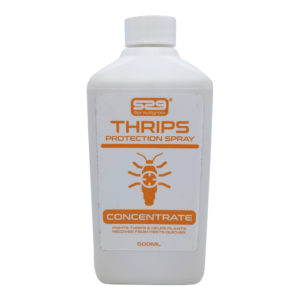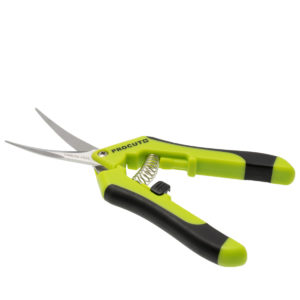When it comes to growing herbs, a lot of people prefer to do it indoors, mainly because of two benefits. The first one is convenience – having your herbs within an arm’s reach means you can quickly and easily add them to your dishes as you cook. The second benefit is the environment – your herbs are protected from the elements and you have more control over their growing conditions.
Read below to find useful advice on how to provide the best care for your plants.
We have covered all important topics of growing a herb garden. Jump to any section from here:
- Best herbs to grow indoors in the UK
- What is the best time to plant herbs indoors?The fabric pots from Gronest come in several size
- Choose the best spot for growing herbs indoors.
- Choose the best pots and containers
- How to water indoor herbs?
- The right temperature for indoor herbs
- How to fertilise an indoor herb garden?
- Herb garden pests and pest control
- How to harvest indoor herbs?
Best Herbs to Grow Indoors in The UK
Most herbs feel comfortable inside, and some can truly thrive. When growing herbs indoors, UK gardeners often pick low-maintenance varieties that are also popular cooking ingredients. Take a look at our list below for ideas on some of the best herbs to grow indoors:
Basil
Basil is one of the most commonly grown herbs. It’s a perfect match for tomatoes and can therefore be added to sauces, salads, and sandwiches or used for pesto. Basil is a tender annual herb that likes lots of sunlight and warmth. Keep the soil moist but not drenched. Avoid placing it in cold or drafty areas. Younger leaves are more fragrant. Regularly pinching off stems and flower heads before they form will encourage the plant to produce more leaves and branch out.
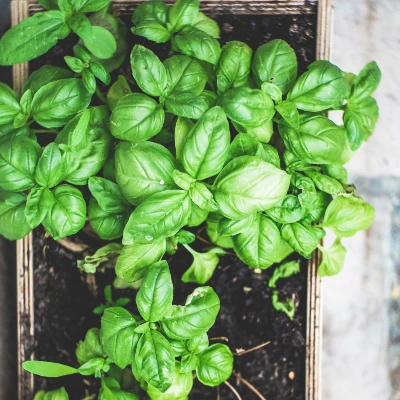
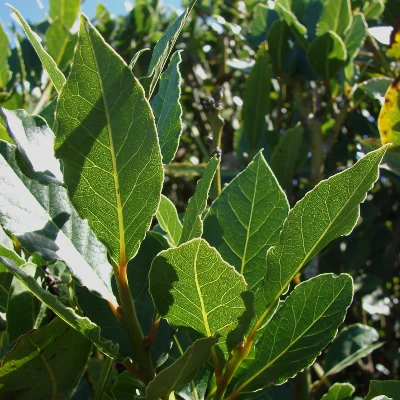
Bay
Bay laurel is a perennial plant commonly used in stews, soups, and sauces. Place it in an east- or west-facing window, ensuring good air circulation and soil drainage. Pick fresh leaves as needed or dry them for later use. Older leaves hold more flavour.
Oregano
Oregano is a perennial plant that’s used for tomato sauces, pizzas, meat, soups and stews. It favours moderate to strong light, so it can be placed on a southern window.
Do not overwater. You can clip stems regularly to promote growth. Use oregano as a fresh herb or dry it for a stronger taste. Strip the leaves and discard the stems prior to use.

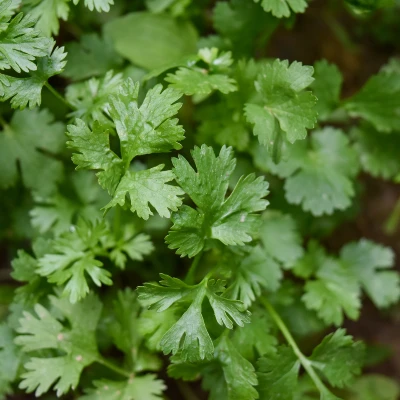
Parsley
Parsley is commonly used in soups, salads, fresh sauces, as well as meats and roasts. It’s a biennial plant that likes full sun.
Grow parsley in well-drained loamy soil and provide regular watering. To harvest, pinch stems off near the base. You can cook with freshly picked leaves or use frozen stalks to prepare stocks or broths.
Rosemary
Rosemary is used in a variety of dishes including chicken, pork, lamb, potatoes and olive oil. It’s a sturdy perennial evergreen shrub. Place it in a south-facing window and provide good drainage.
It works equally well as a fresh herb and as a dried one, and the plant’s pungent fragrance will spread across your kitchen.

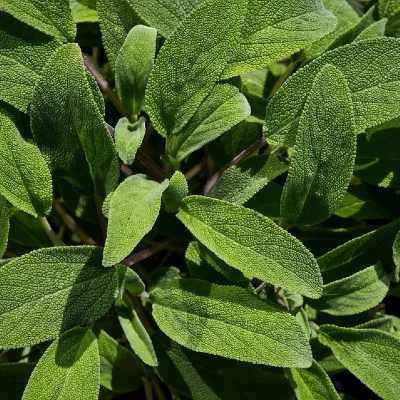
Sage
Sage is a short-lived perennial plant. It’s added to pork, poultry, or game, as well as sausages, vegetables, stuffing, and more. It thrives in a south-facing window.
It fancies well-drained soil and is drought-tolerant. You can pick leaves as needed once the plant is established.
Chervil
Chervil is an annual plant typically used in French cuisine. It’s a perfect addition to fish, poultry, potatoes, vegetables, or salads.
It prefers moderate sun and cooler temperatures of 15-20 degrees Celcius. Pinching the tops off regularly will promote fuller growth.
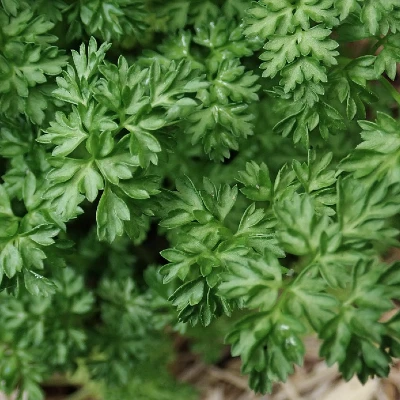

Thyme
Thyme is a popular perennial herb with various culinary uses. It can be used fresh or dried to complement meats, fish, soups, dressings, and vegetables.
Plant it in fast-draining soil and provide full sun. Water moderately.
Tarragon
Tarragon is a perennial plant that goes through a dormant period in late fall or early winter. Finely chopped, it can be added to salads, meat, or eggs.
Plant in well-drained soil and don’t overwater. Provide the plant with partial sun, away from south-facing windows. Pinch off any flowers. Use the leaves fresh, but when necessary, you can dry them for use in winter.
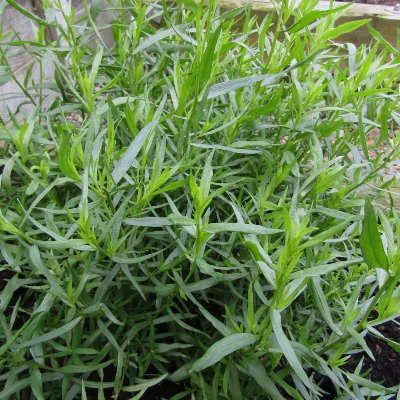
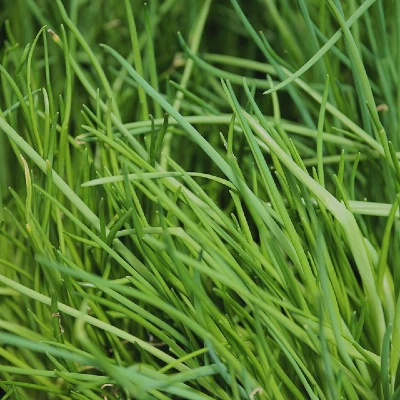
Chives
Chives are a perennial onion-flavoured herb. They make a wonderful addition to eggs, soups, salads, soft cheeses, or a fresh topping on baked potatoes.
They prefer rich, well-drained soil that’s kept moist. Place them in a south- or east-facing window for sufficient light. To harvest, cut a portion of the leaves, leaving at least 5cm of growth.
Mint
Mint is a perennial that’s fragrant and flavourful. You can choose from dozens of different varieties. Mint can be used for tea and cocktails, as well as salads and desserts.
It prefers moist soil and moderate light, ideally in an east-facing window. It spreads quickly underground, so make sure you plant it in an individual pot.

What is the best time to plant herbs indoors?
The best time to plant herbs indoors is generally early spring. However, growing herbs indoors is a year-round endeavour. Starting your seeds early will give you a jump start on the season, regardless of outdoor temperatures, as long as they receive enough light. Then, by transplanting your herbs indoors into bigger containers, you will provide the necessary room for growth.
Choose the best spot for growing herbs indoors
How much light do herbs need to grow indoors? It depends on the plant, but most varieties prefer moderate to strong sunlight. They generally require six hours of direct sunlight. You can ensure this by placing them near a window, usually on a window sill. However, if you don’t have a large enough windowsill, a wall-mounted planter can give you more flexibility.
? Alternatively, if there is a lack of sufficient natural light, you can use artificial LED or HID lights for 14-16 hours a day.

Choose the best pots and containers
There is a vast choice of indoor herb pots in terms of shape and material, from terra-cotta to wood and even cement. But it’s not all about aesthetics. Most herbs prefer fast-draining soil, so the best indoor herb garden planter is one that prevents overwatering.
The most innovative indoor herb garden planters are actually made of fibres from recycled PET bottles. They are environmentally friendly and non-toxic, while also non-breakable and easy to move.
The fabric pots from Gronest come in many sizes: 1 Litre, 2 Litres, 4 Litres, and even larger ones for more ambitious projects. They provide excellent aeration for the plants’ roots and good drainage with optimal moisture retention. In addition, they promote a healthy root system, as the roots won’t grow in circles around the pot.
The Garden HighPro ProPot Walls are a great choice if you’d like to save space. They are hanging indoor herb planters that come with 4 pockets, 8 pockets, or 12 pockets, so you can find the perfect size for your needs.
Fabric containers are reusable, washable, and easy to store. In fact, they’re also weather-resistant, which means you can use your pots and vertical herb planters indoors and outdoors for more than one season.
How to water indoor herbs?
Different plants have different watering requirements – some love more moisture, others prefer moderate moisture, and others are drought-tolerant. If you’re wondering how often to water herbs indoors, less is more.
It’s very easy to overdo it, so a good rule of thumb is to allow the soil to dry out a little between watering, about 5 cm below the top. Several times per week should be enough.
If your plants need daily watering, it may be an indicator that the pot is too small for the plant. You should provide more water in hotter weather and less during the winter. As for how to water herbs indoors, do it slowly, so that the moisture can stay in the soil as opposed to going straight through the drainage holes.
Pro Tip (if you are using plastic, concrete or other non-porous containers): Soil in indoor containers is prone to salt build-ups. Therefore, it’s good to flush your plants once a month to remove harmful deposits. To do so, put your plant in the sink and water it completely. Wait until the water drains out, then water it a second time. Once the water drains out and the plant stops dripping, return it to its original spot.
As for growing herbs in fabric pots or other porous containers (such as clay): You don’t need to worry about soil build-ups. Thanks to the aeration technology and the double-lining of the Gronest Fabric pots, any potential soil buildups are “pushed” away from the soil to the outer lining of the container. All you may need to do is give your fabric pots a good wash at the end of the season. If necessary, scrub them with a 1:1 water-vinegar solution to remove any mineral build-ups. Rinse thoroughly and let dry.
In any case, don’t forget to observe your plants. Signs like droopy yellow leaves, soft stems and a lack of growth may mean overwatering. The same goes for mildew, mould, or fungal growth on the plant, or a foul smell from the soil. On the other hand, yellow, curling lower leaves that feel crispy to the touch indicate underwatering, and so does soil that is pulling away from the sides of the pot.
The right temperature for indoor herbs
The best temperatures for growing herbs indoors tend to be 18-24°C or normal room temperatures. A 10-degree drop at night is normal and even recommended, as it simulates outdoor conditions. In warmer weather, you may wish to move your plants slightly away from the windows to keep them from getting scorched. On the other hand, if temperatures in your house or indoor garden area drop below 10°C, you could consider a plant warmer.
How to fertilise an indoor herb garden?
Unlike veggies, herbs have low nutrient requirements. Still, they do need regular fertilizing because they live in a limited space. Slow-growing herbs with small leaves and woody stems that originate from infertile Mediterranean soils (e.g. oregano, rosemary, bay, thyme) need less fertilizer than fast-growing herbs with larger, thinner leaves (such as basil and parsley).
In general, applying fertiliser once a month is enough. It’s best to use organic products as opposed to synthetic ones. For example, Biobizz has a range of 100% natural nutrients that are ideal for indoor herbs.
The Biobizz Bio-Grow and Biobizz Bio-Bloom fertilisers contain valuable amino acids and 70 trace minerals that boost growth and improve flavour. Fish emulsion like the Biobizz Fish-Mix is one of the most popular fertilisers for herbs because it enriches the micro life in your soil. Biobizz Top-Max is another great choice as it improves nutrient uptake and new cell formation. The Biobizz Try-Pack Indoor combo includes Bio-Grow, Bio-Bloom, and Top-Max, and therefore provides complete plant care when you grow your own herbs indoors.
Herb garden pests and pest control?
If they’re not out in the open, does growing herbs indoors attract bugs? Unfortunately, yes. Although not as much as outdoor plants, your plants are not immune to indoor herb garden bugs.
Some of the most common bugs on herbs indoors include aphids, thrips, spider mites, whiteflies, leafhoppers, leaf miners, parsley worms, flea beetles, weevils, and spittlebugs. It may sound like a lot, but in reality, most of them don’t cause serious damage. And for those that do, good indoor herb garden pest control can protect your plants. For diseases such as mildew there are again efficient products to give you peace of mind.
A good example of a product that’s 100% natural and organic is Spray2Grow Thrip Protection. Used as a foliar spray, it protects your plants from thrips and helps them recover from pest attacks quicker. To protect against spider mites, use Spray2Grow – Spider Mite Protection Spray Concentrate, a non-toxic product that contains natural extracts such as garlic. If you need help with how to get rid of aphids on indoor herbs, apply BUG & MILDEW CONTROL. It will get rid of the pests and wash away active mildew spores too. The Spray2Grow Mildew Protection Spray is a foliar fertiliser that also works great as a preventative measure against fungi.
How to harvest indoor herbs?
The best time to harvest herbs is early in the morning, as that’s when they are full of essential oils. Mature plants should be pinched or cut often, in order to promote new growth and prevent flowering and seeding. If you’re growing herbs indoors and using them regularly, you should get plenty of tender new branches and leaves. For herbs with woody stems, use sharp scissors and cut above a node.
With perennial herbs, it’s best to refrain from harvesting in the first year, until you have an established plant. With annual and biennial herbs, you can go ahead and harvest as much as possible.
If you end up harvesting more than you can use, air-dry your herbs by hanging them in bundles or spreading them out over racks. Make sure they’re placed in a well-ventilated area and exposed to warm, dry air.
Conclusion
There is nothing like the fragrance and taste of fresh herbs, especially if you grew and picked them yourself. With the tips above and the right fertilisers and pest control, you’ll be sure to reap great results in your indoor herb garden.

